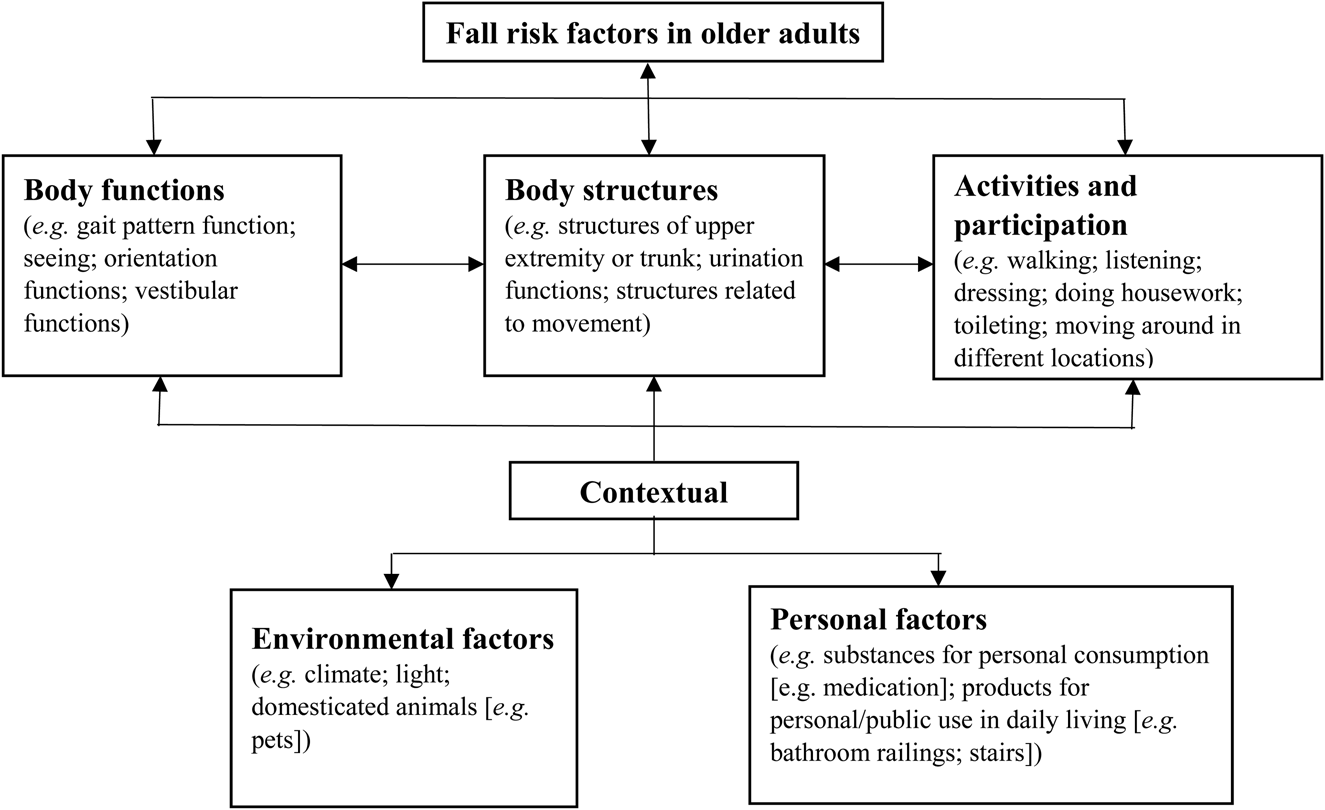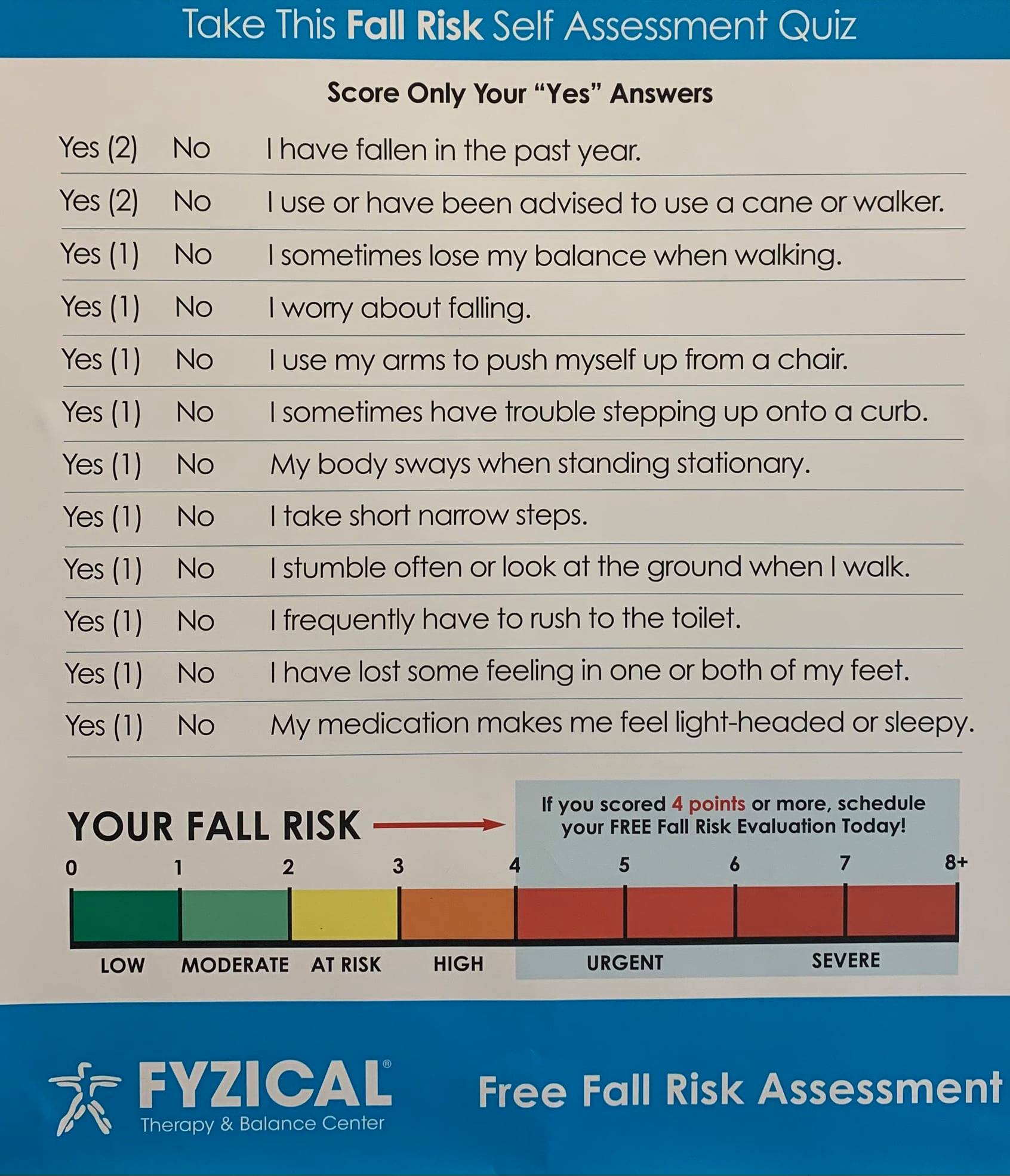Our Dementia Fall Risk PDFs
Our Dementia Fall Risk PDFs
Blog Article
Some Ideas on Dementia Fall Risk You Need To Know
Table of Contents3 Simple Techniques For Dementia Fall RiskThe 4-Minute Rule for Dementia Fall RiskThe Single Strategy To Use For Dementia Fall RiskDementia Fall Risk - The Facts
A loss danger assessment checks to see just how likely it is that you will drop. It is mainly provided for older adults. The evaluation generally includes: This includes a collection of questions regarding your total health and if you've had previous drops or troubles with balance, standing, and/or walking. These devices examine your strength, balance, and gait (the means you walk).STEADI includes screening, assessing, and treatment. Treatments are referrals that might reduce your risk of falling. STEADI includes three actions: you for your danger of succumbing to your danger elements that can be enhanced to try to stop drops (for instance, balance problems, damaged vision) to reduce your risk of falling by using effective methods (for instance, giving education and sources), you may be asked numerous inquiries consisting of: Have you fallen in the previous year? Do you really feel unstable when standing or walking? Are you fretted about falling?, your supplier will certainly examine your toughness, equilibrium, and stride, making use of the complying with autumn evaluation tools: This test checks your stride.
You'll rest down again. Your service provider will certainly examine the length of time it takes you to do this. If it takes you 12 secs or even more, it might indicate you go to higher danger for a fall. This examination checks strength and equilibrium. You'll rest in a chair with your arms went across over your breast.
Move one foot halfway ahead, so the instep is touching the large toe of your other foot. Move one foot completely in front of the various other, so the toes are touching the heel of your other foot.
3 Simple Techniques For Dementia Fall Risk
The majority of drops take place as an outcome of several contributing elements; therefore, managing the threat of dropping begins with determining the elements that add to drop danger - Dementia Fall Risk. A few of the most pertinent threat aspects include: History of previous fallsChronic medical conditionsAcute illnessImpaired gait and equilibrium, lower extremity weaknessCognitive impairmentChanges in visionCertain high-risk medications and polypharmacyEnvironmental variables can likewise enhance the threat for drops, including: Inadequate lightingUneven or harmed flooringWet or slippery floorsMissing or harmed hand rails and order barsDamaged or improperly equipped devices, such as beds, wheelchairs, or walkersImproper usage of assistive devicesInadequate supervision of the individuals living in the NF, consisting of those who show aggressive behaviorsA effective autumn risk monitoring program needs an extensive medical analysis, with input from all members of the interdisciplinary group

The care strategy should also include interventions that are system-based, such as those that promote a risk-free environment (ideal lighting, hand rails, get bars, etc). The efficiency of the treatments must be reviewed periodically, and the treatment plan changed as needed to reflect modifications in the autumn risk analysis. Carrying out an autumn threat administration system utilizing evidence-based best technique can reduce the occurrence of drops in the NF, while restricting the capacity for fall-related injuries.
The Basic Principles Of Dementia Fall Risk
The AGS/BGS guideline recommends evaluating all adults matured 65 years and older for loss risk every year. This screening includes asking people whether they have fallen 2 or even more times in the previous year or sought medical attention for an autumn, or, if they have not dropped, whether they feel unsteady when walking.
Individuals who have actually dropped when without injury must have their equilibrium and stride evaluated; those with stride or balance irregularities must receive extra evaluation. A background of 1 autumn without injury and without gait or equilibrium problems does not warrant additional evaluation past ongoing yearly fall threat screening. Dementia Fall Risk. A loss risk assessment is needed as component of the Welcome to Medicare evaluation

What Does Dementia Fall Risk Do?
Documenting a falls background is one of the top quality indications for fall avoidance and management. copyright medications in particular are independent predictors of falls.
Postural hypotension can usually be minimized by lowering check these guys out the dose of blood pressurelowering medicines and/or quiting medicines that have orthostatic hypotension as a side result. Use of above-the-knee assistance hose and sleeping with the head of the bed raised may also reduce postural reductions in high blood pressure. The suggested components of a fall-focused checkup are revealed in Box 1.

A TUG time more than or equivalent to 12 seconds suggests high fall risk. The 30-Second Chair Stand examination analyzes reduced extremity strength and balance. Being unable to stand from a chair of knee height without utilizing one's arms indicates boosted autumn danger. The 4-Stage Equilibrium test analyzes static balance by having the client stand in 4 positions, each progressively much more challenging.
Report this page